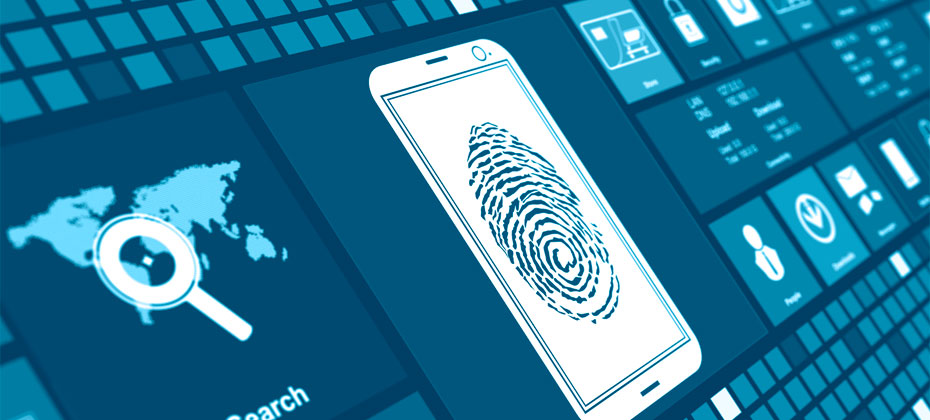Tag: fraud

The rise of the digital channel lead to a rise in new types of fraud – like cryptocurrency and buy now, pay later scams. While the scams themselves are new, they’re based on tried-and-true schemes like account takeover and synthetic identity fraud that organizations have been working to thwart for years, once again driving home the need for a robust fraud solution. While the digital channel is extremely attractive to many consumers due to convenience, it represents a balancing act for organizations – especially those with outdated fraud programs who are at increased risk for fraud. As organizations look for ways to keep themselves and the consumers they serve safe, many turn to fraud risk mitigation. What are fraud risk management strategies? Fraud risk management is the process of identifying, understanding, and responding to fraud risks. Proper fraud risk management strategies involve creating a program that detects and prevents fraudulent activity and reduces the risks associated with fraud. Many fraud risk management strategies are built on five principles: Fraud Risk AssessmentFraud Risk GovernanceFraud PreventionFraud DetectionMonitoring and Reporting By understanding these principles, you can build an effective strategy that meets consumer expectations and protects your business. Fraud risk assessment Fraud protection begins with an understanding of your organization’s vulnerabilities. Review your top risk areas and consider the potential losses you could face. Then look at what controls you currently have in place and how you can dial those up or down to impact both risk and customer experience. Fraud risk governance Fraud risk governance generally takes the form of a program encompassing the structure of rules, practices, and processes that surround fraud risk management. This program should include the fraud risk assessment, the roles and responsibilities of various departments, procedures for fraud events, and the plan for on-going monitoring. Fraud prevention “An ounce of prevention is worth a pound of cure.” This adage certainly rings true when it comes to fraud risk management. Having the right controls and procedures in place can help organizations stop a multitude of fraud types before they even get a foot in the door. Account takeover fraud prevention is an ideal example of how organizations can keep themselves and consumers safe. Fraud detection The only way to stop 100% of fraud is to stop 100% of interactions. Since that’s not a sustainable way to run a business, it’s important to have tools in place to detect fraud that’s already entered your ecosystem so you can stop it before damage occurs. These tools should monitor your systems to look for anomalies and risky behaviors and have a way to flag and report suspicious activity. Monitoring and reporting Once your fraud detection system is in place, you need active monitoring and reporting set up. Some fraud detection tools may include automatic next steps for suspicious activity such as step-up authentication or another risk mitigation technique. In other cases, you’ll need to get a person involved. In these cases it’s critical to have documented procedure and routing in place to ensure that potential fraud is assessed and addressed in a timely fashion. How to implement fraud risk management By adhering to the principles above, you can gain a holistic view of your current risk level, determine where you want your risk level to be, and what changes you’ll need to make to get there. While you might already have some of the necessary tools in place, the right next step is usually finding a trusted partner who can help you review your current state and help you use the right fraud prevention services that fit your risk tolerance and customer experience goals. To learn more about how Experian can help you leverage fraud prevention solutions, visit us or request a call. Learn more

There’s an undeniable link between economic and fraud trends. During times of economic stress, fraudsters engage in activities specifically designed to target strained consumers and businesses. By layering risk management and fraud prevention tools, your organization can manage focus on growing safely. Download infographic Review your fraud strategy

With fraud expected to surge amid uncertain economic conditions, fraudsters are preparing new deception techniques to outsmart businesses and deceive consumers. To help businesses prepare for the coming fraud threats, we created the 2023 Future of Fraud Forecast. Here are the fraud trends we expect to see over the coming year: Fake texts from the boss: Given the prevalence of remote work, there’ll be a sharp rise in employer text fraud where the “boss” texts the employee to buy gift cards, then asks the employee to email the gift card numbers and codes. Beware of fake job postings and mule schemes: With changing economic conditions, fraudsters will create fake remote job postings, specifically designed to lure consumers into applying for the job and providing private details like a social security number or date of birth on a fake employment application. Frankenstein shoppers spell trouble for retailers: Fraudsters can create online shopper profiles using synthetic identities so that the fake shopper’s legitimacy is created to outsmart retailers’ fraud controls. Social media shopping fraud: Social commerce currently has very few identity verification and fraud detection controls in place, making the retailers that sell on these platforms easy targets for fraudulent purchases. Peer-to-peer payment problems: Fraudsters love peer-to-peer payment methods because they’re an instantaneous and irreversible way to move money, enabling fraudsters to get cash with less work and more profit “As fraudsters become more sophisticated and opportunistic, businesses need to proactively integrate the latest technology, data and advanced analytics to mitigate the growing fraud risk,” said Kathleen Peters, Chief Innovation Officer at Experian Decision Analytics in North America. “Experian is committed to continually innovating and bringing solutions to market that help protect consumers and enable businesses to detect and prevent current and future fraud.” To learn more about how to protect your business and customers from rising fraud trends, download the Future of Fraud Forecast and check out Experian’s fraud prevention solutions. Future of Fraud Forecast Press Release

External fraud generally results from deceptive activity intended to produce financial gain that is carried out by an individual, a group of people or an entire organization. Fraudsters may prey on any organization or individual, regardless of the size or nature of their activities. The tactics used are becoming increasingly sophisticated, requiring a multilayered fraud mitigation strategy. Fraud mitigation involves using tools to reduce the frequency or severity of these risks, ultimately protecting the bottom line and the future of the organization. Fraud impacts the bottom line and so much more According to the Federal Trade Commission, consumers reported losing more than $10 billion to fraud in 2023, a 14% increase over the previous year and the highest dollar amount ever reported. These costs extend beyond the face value of the theft to include fees and interest incurred, fines and legal fees, labor and investigation costs and external recovery expenses. Aside from dollar losses and direct costs, fraud can also pose legal risks that lead to fines and other legal actions and diminish credibility with regulators. Word of deceptive activities can also create risk for the brand and reputation. These factors can, in turn, result in a loss of market confidence, making it difficult to retain clients and engage new business. Leveraging fraud mitigation best practices As the future unfolds, three things are fairly certain: 1) The future is likely to bring more technological advances and, thereby, new ways of working and creating. 2) Fraudsters will continue to look for ways to exploit those opportunities. 3) The future is here, today. Organizations that want to remain competitive in the digital economy should make fraud mitigation and prevention an integral part of their operational strategy. Assess the risk environment While enhancing revenue opportunities, the global digital economy has increased the complexity of risk management. Be aware of situations that require people to enforce fraud risk policies. While informed, experienced people are powerful resources, it is important to automate routine decisions where you can and leverage people on the most challenging cases. It is also critical to consider that not every fraud risk aligns directly to losses. Consider touchpoints where information can be exposed that will later be used to commit fraud. Information that crooks attempt to glean from idle chatter during a customer service call can be a source of unexpected vulnerability. These activities can benefit from greater transparency and automated oversight. Create a tactical plan to prevent and handle fraud Leverage analytics wherever possible to streamline decisions and choose the right level of friction that’s appropriate for the risk, and palatable for good customers. Consumers and small businesses have come to expect a customized and frictionless experience. Employee productivity, and ultimately revenue growth, requires the ability to operate with speed and informed confidence. A viable fraud mitigation strategy should incorporate these goals seamlessly with operational objectives. If not, prevention and mitigation controls may be sidelined to get legitimate business done, creating inroads for fraudsters. Look for a partner who can apply the right friction to situations depending on your risk appetite and use existing data (including your internal data and their own data resources) to better identify individual consumers. This identification process can actually smooth the way for known consumers while providing the right protection against fraudsters and giving consumers who are new to your organization a sense of safety and security when logging in for the first time. It's equally important that everyone in your organization is working together to prevent fraud. Establish and document best practices and controls, beginning with fostering a workplace culture in which fraud mitigation is part of everyone's job. Empower and train all staff to identify and report suspicious activity and ensure they know how to raise concerns. Consider implementing ways to encourage open and swift communication, such as anonymous or confidential reporting channels. Stay vigilant and tap into resources for managing risks It is likely impossible to think of every threat your organization might face. Instead, think of fraud mitigation as an ongoing process to identify and isolate any suspected fraud fast — before the activity can develop into a major threat to the bottom line — and manage any fallout. Incorporating technology and robust data collection can fortify governance best practices. Technology can also help you perform the due diligence faster, ensuring compliance with Know Your Customer (KYC) and other regulations. As necessary, work with risk assessment consultants to get an objective, experienced view. Learn more about fraud risk mitigation and fraud prevention services. Learn more

What is elder abuse fraud? Financial abuse is reportedly the fastest-growing form of elder abuse, leaving many Americans vulnerable to theft scams, and putting businesses and other organizations on the frontlines to provide protection and help prevent fraud losses. Financial elder abuse fraud occurs when someone illegally uses a senior’s money or other property. This can be someone they know, or a third party – like fraudsters who are perpetrating romance scams Older consumers and other vulnerable digital newbies were prime targets for this type of abuse during the start of the pandemic when many of them became active online for the first time or started transacting in new ways. This made them especially attractive targets for social engineering (when a fraudster manipulates a person to divulge confidential or private information) and account takeover fraud. While most of us have become used to life online (in fact, there’s been a 25% increase in online activity since the start of the pandemic), some seniors still have risky habits such as poor password maintenance, that can make them more attractive targets for fraudsters. What is the impact of elder abuse fraud? According to the FBI’s Internet Crime Complaint Center (IC3), elder abuse fraud cost Americans over the age of 60 more than $966 million in 2020. In addition to the direct cost to consumers, elder abuse fraud can leave organizations vulnerable to the fallout from data breaches via account takeover, and lost time and money spent helping seniors and other vulnerable Americans recoup their losses, reset accounts, and more. Further, the victim may associate the fraud with the bank, healthcare provider, or other businesses where the account was taken over and decide to stop utilizing that entity all together. How can organizations prevent elder abuse fraud? Preventing elder abuse fraud can take many forms. Organizations should start with a robust fraud management solution that can help prevent account takeover, first-party, synthetic identity fraud, and more. This platform should also include the ability to use data analysis to detect and flag sudden changes in financial behavior, online activities, and transaction locations that could indicate abuse or takeover of the account. With the right fraud strategy in place, organizations can help prevent fraud and build trust with older generations. Given that 95% of Baby Boomers cite security as the most important aspect of their online experience, this step is too important to miss. To learn more about how Experian is helping organizations develop and maintain effective fraud and identity solutions, be sure to visit us or request a call. Contact us

Between social unrest across the globe, the lingering pandemic, and the digital transformation brought on by the health crisis, the fraud landscape has expanded dramatically for businesses and consumers alike. According to Experian’s latest global identity and fraud report, 93% of U.S. companies have mid-to-high concern for fraud, and 81% say that their worries about fraud have increased over the past 12 months. Monitoring unused or dormant accounts for fraud is often a warning directed at consumers. However, it’s now advice an increasing number of businesses are wishing they’d followed, as growing synthetic identity (SID) fraud is fueling a dramatic increase in losses—SID related charge-offs ballooned to $20 billion in 2021 alone, according to the Federal Reserve Bank of Boston. The threat of SIDs SIDs are made to look like an actual consumer, combining both real and fake data to form a new composite identity. They typically evolve using a combination of tactics that include: Identifying and creating relationships with businesses that have a high tolerance for identity discrepancies. These include businesses whose products expose the business to low fraud risk and/or products offered to market segments where identity verification is expected to be challenging. Either of these enable an SID to be planted among consumer data sources. Attaching the SID to existing accounts and relationships that belong to other consumers. Often these existing accounts were established by collusive criminals or by using other SIDs, but there are also ways for legitimate consumers to collect ‘rent’ in exchange for adding other consumers to existing accounts. Either approach improves the SID’s appearance of credit worthiness. Progressively building the SID’s independent ability to access larger and larger amounts of credit until they spend quickly and default on all obligations, leaving no one for the victimized businesses to pursue. “They’re difficult to identify because of the combination of real and fake data and because there’s no actual victim reporting an identity theft. As a result, businesses typically have trouble separating SID losses from credit losses,” said Chris Ryan, Experian’s go-to-market lead for fraud and identity. “SID fraud isn’t committed haphazardly. It’s carefully planned and executed—and it adapts to policy changes. Some businesses change their underwriting policy or focus on early-lifecycle account activity like purchases, payments, and requests for additional credit to reduce SID losses that occur immediately after an account is opened. SIDs can adapt to this. If six months of responsible account behavior earns a credit line increase or the ability to spend large amounts in a single billing cycle, the perpetrators are willing to wait,” Ryan said. “It’s something businesses and lenders need to be on guard for, especially with the fast-paced holiday shopping season ahead,” he said. Addressing SIDs Solving the increasingly complex problem of SID fraud requires a thoughtful approach. The institutions seeing success at preventing multi-faceted fraud are using a layered approach to identifying and mitigating fraud. Here are three steps lenders can take today to prevent SID fraud across your portfolio: Use data and analytics that extend beyond credit to evaluate identities and their histories more completely. Apply those analytics across the lifecycle from marketing and origination to portfolio management recognizing that SID risk is not restricted to a single lifecycle stage. Have a rigorous verification process that escalates to document verification or the Social Security Administrations Electronic Consent Based SSN Verification (eCBSV) process For more information on how you can leverage a multi-layered approach to fraud in your business, visit our fraud and identity solutions hub or request a call to discuss customizing a solution for your company.

Reports of romance scams have spiked in the past two years, partly due to the rise in popularity of online dating and social apps while Americans were isolated at home. With more consumers looking for love online, fraudsters have jumped on the chance to build intimate, trusted relationships without the immediate pressure to meet in person. And these shams seemingly paid off: from January 1 to July 31, 2021, the Federal Bureau of Investigation (FBI) Internet Crime Complaint Center received over 1,800 complaints related to an online romance scam, resulting in losses of approximately $133 million. These romance scams carry financial and security risks that impact both the targets of the fraud and the businesses with which they interact. Experian predicts that romance scams will continue to rise in 2022, leaving consumers and businesses vulnerable to attacks and theft. What is a romance scam? According to the FBI, a romance scam occurs when “a criminal adopts a fake online identity to gain a victim's affection and trust." Typically, fraudsters seek out their marks in dating or socializing settings, such as online apps, and strive to build intimacy and trust as quickly as possible. To avoid suspicion, they may claim that they travel frequently for work or give other excuses about why they can't meet in person. Their attentions are in the context of love and dating, so it's not uncommon for romance scammers to offer marriage proposals or other commitments to intensify the relationship, but the whole point of this fraud is to get their targets to send money. Sometimes fraudsters simply ask for a “loan" to cover medical expenses, an unforeseen shortfall or even travel costs to see the victim in person. Other times, they might ask for gifts or gift cards. Requests for money – whether through direct deposit, gift cards or credit card payments – are all red flags. Increasingly, romance scammers have tried to lure people into investment deals, including cryptocurrency. Romance scams predate the internet by centuries, but the emergence of digital technologies has made them easier to accomplish – and easier to get away with, too. Romance scams are increasing In 2020, there were around 44 million users of online dating services in the United States and this increased to 49 million users in 2021, according to Statista Research Department. By 2022, two years into the COVID-19 pandemic, that number jumped to more than 50 million, and it's projected to rise to 53.3 million by 2025. More users mean more potential targets. According to the Federal Trade Commission (FTC), romance scams hit a record high in 2021, with consumers reporting $547 million in losses that year – up 80 percent from 2020. The median individual loss reported to the FTC from romance scams was $2,400. With the help of modern technologies, romance scammers have added new tactics to their grift. For example, in addition to usual requests for money, a target might be asked to participate in bogus investment schemes involving cryptocurrency. In these cases, the median loss was $10,000. According to the FTC, romance scammers have conned Americans out of an estimated $1.3 billion over the past five years. Worryingly, romance scams also present a serious data risk. Damage could spread beyond financial losses into even more hazardous territory if the scammer can gain access to a target's personally identifiable information (PII) or financial data. In these cases, fraudsters might engage in identity theft to create new accounts or take over existing ones. Breaking up with romance scammers Businesses may not be susceptible to the lure of love, but they're still vulnerable when it comes to the fallout from romance scams. Companies must ensure they have a layered solution that seamlessly recognizes returning customers, while monitoring for indicators that the user presenting an identity is not actually the owner of that identity. Some warning signs include logins from a new IP address nowhere near the user's registered physical address; unusual types or frequencies of transactions; and the addition of a suspicious new authorized user to a credit card account. Businesses also have access to fraud prevention help. Using vast data resources, decades of identity and credit risk management, consumer-permissioned data and industry-leading analytics, Experian enables businesses to detect and prevent fraud by identifying credible customers. This empowers businesses to apply the appropriate amount of friction to each interaction to protect their customers, their data and themselves. To learn more about how Experian is assisting businesses with their fraud prevention efforts, visit us or request a call. And keep an eye out for additional in-depth explorations of our Future of Fraud Forecast. Future of Fraud Forecast Fraud Prevention

Across all levels of government, we are seeing a surge in digital modernization — transforming the delivery of traditional services into a contactless, digital environment. Whether it is with the Social Security Administration’s digital modernization effort, the state of California’s Vision 2023, or even at the local level with counties modernizing digital access to records for their citizens. This comes at a time when identity fraud in government services is growing at an alarming rate, with an increase of over 2,900 percent related to government benefits or document fraud in 2020 according to the FTC. A key challenge for any agency planning digital modernization is balancing access with security. This is particularly critical in an environment where over 1 billion records were exposed over a recent five-year span. Given the U.S. population is currently about 330 million, that means each citizen had an average of three breach exposures. Therefore, identity proofing must be a critical part of any agency modernization effort. National Institute of Standards and Technology Special Publication (NIST SP) 800-63 revision 3 lays out a risk assessment to help organizations determine the appropriate level of security to apply based on six areas of impact. However, identity proofing a new citizen through digital channels requires significant friction at levels above Identity Assurance Level 1 (IAL1). The stringent requirement for a biometric match in this standard at IAL2 presents a real challenge to the balance mentioned above, which has led agencies to seek alternatives that both combat the risk of fraud and identity theft and are operationally sound. Experian has been supporting the private sector in this endeavor for years, helping them effectively manage identity theft and fraud concerns while allowing seamless access to services for the vast majority of their consumers. This risk-based approach through our CrossCore® platform and multitude of options to identify and combat fraud allows agencies to deliver the security and accessibility expected by their citizens. CrossCore allows agencies to verify and identify citizens using multiple data points: Traditional personally identifiable information (name, address, Social Security number, date of birth) Email Phone number Device identification Biometrics CrossCore can instantly take the risk information from these risk signals above and initiate additional verification where there is a higher risk of identity theft or fraud, including knowledge-based verification (KBV), one-time passcode (OTP) to a trusted phone number linked to the identity being presented, or even remotely verifying identity documents (e.g., driver’s license, passport, etc.) through our new CrossCore Doc Capture solution. Just recently, Experian helped a state lottery agency implement an efficient identity proofing system to enable digital redemption of winning tickets, saving both the government and the citizens time and money. Experian’s identity, verification, and fraud solutions can help government agencies of all sizes on their journey to digital modernization. To learn more about the options available to your agency, visit us or request a call. CrossCore Doc Capture

Online transactions face a higher chance of being declined because face-to-face transactions come with a higher degree of confidence. Businesses who fail to address this problem run the risk of losing the customer permanently, damaging their reputation and bottom line. What can e-commerce marketplace merchants do to increase the approval rate of online payments without making fraud worse? Here are three tips: 1. Broaden access to data beyond what’s in the authorization stream. Merchants use a variety of solutions to prevent fraud and verify identities, but typically use very limited data to approve a transaction through the authorization stream between a merchant and issuer. The issuing bank often only compares the purchase data to the address listed on the card owner’s account, which can create discrepancies when a customer is trying to send an order to an alternate address from their primary home. That’s why it’s important for merchants to augment their decisioning with additional data sources to help inform the true customer risk profile. 2. Leverage capabilities that can assess risk for both the transaction and the individual behind it. Today, merchants leverage limited data including email address data, device information and other technologies in silos to augment their address verification capabilities. The challenge with these tools is that each judge the risk of a specific component of the transaction or the individual. Where integration is lacking, false positives are amplified. 3. Collaborate and share expertise and data across merchants and issuers. How can Experian help? Leveraging our multidimensional data, technical expertise and advanced analytics capabilities, we can help businesses frictionlessly authenticate valid customers, thus increasing revenue by increased approval rates, without increasing fraud or operating expenses. Only Experian Link™, our frictionless credit card owner verification solution can associate payment card with its owner. This solution combines Experian’s vast data assets – including over 500 million credit card account numbers on file in the U.S. across 250 million consumers – with our advanced analytics capabilities to match and assess the risk of the identity attributes presented to the merchant to the identity attributes contributed by the credit card’s issuer and to Experian’s network of credit and identity inquiries. The result: Experian Link’s patent-pending REST API simply and frictionlessly improves a merchant’s customer experience and helps increase revenue while reducing their fraud and operating expenses. Get started with Experian Link™ now. Experian Link

There’s no doubt that fraudulent transactions can end up costing businesses money , which have led many to implement risk-mitigation strategies across every stage of the purchasing journey. However, this very same protection can increase false declines, and the associated friction can create high rates of cart-abandonment and negative impacts for a business’s brand. What is a false decline? A false decline is a legitimate transaction that is not completed due to suspected fraud or the friction that occurs during verification. False declines occur when a good customer is suspected of fraud and then prevented from completing a purchase. This happens when a company’s fraud prevention solution provides inadequate insight into the identity of the customer, flagging them as a potential bad actor. The result is a missed sale for the business and a frustrating transaction and experience for the customer. Are false declines costing your business money? False declines have high revenue and cost consequences for e-commerce marketplace merchants. By denying a legitimate customer purchase at checkout, businesses risk: Loss of new sales directly impacting revenue 16% of all sales are rejected by e-commerce merchants unnecessarily costing businesses ~$11B in sales annually,1 with an estimated 70% of unwarranted friction as a contributing cause. Loss in customer loyalty and lifetime value Blocked payments can leave customers with a poor impression of your business and there’s a good chance they’ll take their business elsewhere. Tarnished business reputation Today’s customers expect businesses and online services to work seamlessly. 81% of consumers say a positive experience makes them think more highly of a brand. Therefore, your brand might take a hit if unnecessary obstacles prevent them from having a good experience. High operational overhead costs The average business manually reviews 16% of transactions for fraud risk. It is estimated that 10 minutes are needed for each review. This inefficiency can be costly as it takes time away from fraud teams who can work on higher priority or strategic initiatives. Businesses can benefit from a seamless and secure payment experience that drives real-time resolution and eliminates a majority of false declines and bottlenecks, ultimately helping increase approval rates without increasing risk. Get started with Experian Link™ - our frictionless credit card owner verification solution. Learn more 1"E-Commerece Fraud Enigma: The Quest to Maximize Revenue While Minimizing Fraud Report" Aite-Novarica Group, July 2022

This post was updated in 2022. Fraud prevention can seem like a moving target. Criminals often shift from one scheme to the next, forcing organizations to play catch up to protect consumers’ identities and funds. But with the right technology, it’s possible to implement a fraud solution that provides protection and enhances the consumer journey. The pandemic fraud boom Government stimulus funds, COVID-19 testing and the loosening of business controls were a boon for criminals and levied an immense cost against businesses and consumers. Consumer fraud losses rose to $3.3 billion in 2020, up from $1.8 billion in 2019. The rapid increase in digital activity had two significant impacts. First, it shifted new account applications to the digital channel, where increased anonymity favors fraudsters by creating an environment where identity thieves could hide among the immense volume of applicants and monetize stolen personally identifiable information (PII). Second, it fueled account takeover (ATO) attacks by introducing digital “newbies” with unsophisticated password habits and limited ability to recognize and protect themselves from malware or social engineering, making them easy targets for credential theft. The return of old-school fraud Now that businesses and consumers are growing wise to some of the fraud schemes brought on by the COVID-19 pandemic, criminals are turning to new avenues, including tried-and-true methods like account opening and ATO fraud. New account fraud is expected to cost U.S. financial institutions $3.5 billion in 2021 alone. Fraud organizations will take the PII available and match it with automated tools to increase their efficiency and success rates while continuing with phishing and other schemes to gain new information that can fuel further attacks. Building a fraud solution Staying ahead of fraudsters may feel like a losing proposition but equipped with the proper fraud controls, you can enhance the customer experience, increase operational efficiency and protect against developing fraud schemes. With a fraud solution that uses multiple tools in concert, it’s possible to recognize, verify and holistically risk assess most consumers that pass through your portfolio. The right platform — ideally one that can call upon different services to perform each job — will enable your organization to flag suspicious activity, increase insight into large-scale attacks, track risky users and break down traditional internal silos. By coordinating efforts and adding multiple touchpoints to run both in the foreground and background, you can ensure the right friction is applied at the right time without diminishing the end-user experience. In fact, by improving your recognition tools, you can make the experience for recognized, legitimate customers even easier. To learn more about the potential impacts of traditional fraud and how your organization can leverage a fraud prevention solution to achieve your retention and growth goals, read our latest white paper or request a call. Read white paper Schedule a call

Previously, the Global Identity and Fraud Report called for businesses to meet consumer expectations for online recognition and security while improving the digital experience. Organizations have answered this call with investments and new initiatives, but the fraud risk persists and consumers are relying on businesses to protect them. In our latest report, we explore the issues associated with siloed recognition processes, consumer expectations and preferences, and effective risk strategies. We surveyed more than 6,000 consumers and 1,800 businesses worldwide about this connection for our 2022 Global Identity and Fraud Report. This year’s report dives into: How online security yields engagement and trust with today’s digital consumers The role of businesses in protecting online consumers, and the associated benefits The current opportunity for businesses to implement multiple identity and fraud solutions The role that orchestration and outsourcing play in helping companies prevent fraud To earn consumer trust and loyalty, organizations need to leverage automated solutions to identify and protect consumers across their online journeys while providing seamless recognition and low-friction fraud prevention with a robust and flexible fraud platform. To learn more about our findings and how to implement an effective solution, download Experian’s 2022 Global Identity and Fraud Report. Read the report Review your fraud strategy

Cryptocurrency scams are on the rise as digital currencies gain popularity. The decentralized nature of these currencies makes them equally attractive to both legitimate consumers and fraudsters. Businesses may find themselves in a difficult position as they seek to prevent cryptocurrency-related fraud and help protect consumers. What are cryptocurrency scams? Cryptocurrencies are virtual currencies often based on and secured by blockchain technology. However, this does not always translate into security for the individual consumer. Many individuals fall victim to either cryptocurrency investment scams or cryptocurrency theft. Cryptocurrencies are not yet well-regulated or backed by a sovereign entity, leaving consumers open to threats when purchasing funds. The deregulated nature of the currencies makes it easy for scammers to build what appear to be legitimate cryptocurrency projects before disappearing, similar to pump-and-dump stock schemes. Additionally, scammers will perpetrate romance or other relationship-based scams and convince the victim to send them funds in cryptocurrency form. Cryptocurrency theft follows a few traditional fraud patterns: The fraudster may use phishing or social engineering to steal credentials. A crime ring might leverage malware or keystroke loggers to do the same thing. A scammer might present a “reward” to an unsuspecting consumer and require access to their wallet in order to “gift” the reward. Scammers consistently find new ways to trick unsuspecting consumers, including a recent scam relying on QR codes to steal funds converted to cryptocurrency via an ATM. Other common scams utilize imposter websites, fake mobile apps, bad tweets, or scamming emails to steal information and funds. The impact of scams on consumers According to the FTC, investment cryptocurrency scam reports have skyrocketed, with nearly 7,000 people reporting losses totaling more than $80 million from October 2020 to March 2021, with a media loss of $1,900. In 2020 the Better Business Bureau Scam Tracker Risk Report ranked cryptocurrency scams as the seventh riskiest. In 2021, they jumped to the second riskiest scam. In Michigan alone 31 cryptocurrency scams were reported from January 2020 to March 2022, with reported loses from $350 all the way to $41,000. The impact of scams on businesses While the true impact of cryptocurrency scams on businesses is hard to measure, it’s easy to identify several areas for concern. First is the opportunity for the theft of personally identifiable information (PII) during a fraudulent cryptocurrency transaction. Once fraudsters have stolen funds, they may also funnel them through a legitimate business and turn them into a regulated form of currency for easy of use. Businesses with legitimate cryptocurrency interactions may also suffer from spoofed apps or websites, causing reputational damage when consumers are taken in by a scam. Preventing the fallout from scams As companies debate accepting cryptocurrency as a form of payment, it’s important to consider that funds may be stolen or accessed by a malicious party. One way to protect your organization is to have a strong device identification strategy that can help ensure the entity accessing an account and the funds within is the true owner. By layering in this protection with other fraud defenses, businesses can be better prepared as consumer payment preferences shift. Additionally, financial institutions and other organizations should keep consumers informed about how to protect their own data and signs of scams. To learn more about how Experian is helping businesses develop and maintain effective fraud and identity solutions, visit us or request a call. And keep an eye out for additional in-depth explorations of our Future of Fraud Forecast. Request a call Future of Fraud Forecast

Experian recently announced Experian Identity and published an advertorial in American Banker outlining the integrated approach to identity that recognizes the full breadth of the company’s authoritative data solutions that help businesses better connect with their consumers in more personalized, meaningful and secure ways. The efforts address the rapidly changing definition and landscape of identity and take on the importance and needs for identity which span across the entire customer journey. From marketing to a specific consumer’s needs, to facilitating a friction-right customer experience, to protecting personal information. As such, there’s a gap for single-partner providers to help businesses navigate this change, while also putting the needs of the consumer first. “Identity data sets are constantly growing with inputs from new interactions. Many future sources of data have yet to be even conceived or developed,” said Kathleen Peters, Chief Innovation Officer, Experian Decision Analytics. “Staying ahead of the identity market curve is vital, and it requires building and continually evolving an enterprise-scale identity solution that interconnects with your own unique data and systems to create attribute-rich profiles of your customers that work across any identity application. That’s Experian Identity.” Experian Identity underscores the need businesses have to respond to increasing identity needs with interconnected, scalable technology, products and services that optimize the consumer experience. While the integrated approach announcement is new, the capability is not. Experian has been trusted for decades to secure individuals’ identity around the most important decisions in their lives – think purchasing a car or home, being identified at the doctor’s office, and more. As such, consumers remain at the center of every action. Experian Identity offers identity resolution, verification, authentication and protection, and fraud management solutions that include first- and third-party fraud, account takeover, credit card verification, identity resolution and restoration, risk-based authentication, synthetic identity protection and more. Additionally, we’ve included a special blog post introducing Experian’s identity capabilities from Kathleen Peters on the Experian Global News Blog and additional coverage. Stay tuned for more updates. Experian Global News Blog - Making Identities Personal: Experian Helps Businesses Build Consumer Trust American Banker – Making Identities Personal: Building Trust and Differentiating Your Brand Experian White Paper - Making Identities Personal For more information about Experian Identity, visit www.experian.com/identity-solutions.

Experian’s latest Global Insights Report found that more than half of consumers have increased their online spending in the last three months, and 50% say it will increase in the next three months. Life online is here to stay, and consumer expectations have shifted, giving businesses and opportunity to sink or swim when building trust and gaining loyalty. This spring, Experian surveyed 6,000 consumers and 2,000 businesses across all industries to learn more about how, why, and where consumers are interacting with businesses online. Our research found that: Experience is top of mind, with 81% of consumers saying that a positive online experience makes them think more highly of a brand Digital payment options are on the rise with 62% of consumers using mobile wallets and 57% considering buy now, pay later as a replacement for their credit card Security is still a big factor, but 73% of consumers say the onus is on businesses to protect them online Download the report to get all the latest insights into consumer sentiment and how recent changes are impacting business priorities and investments. Download the report